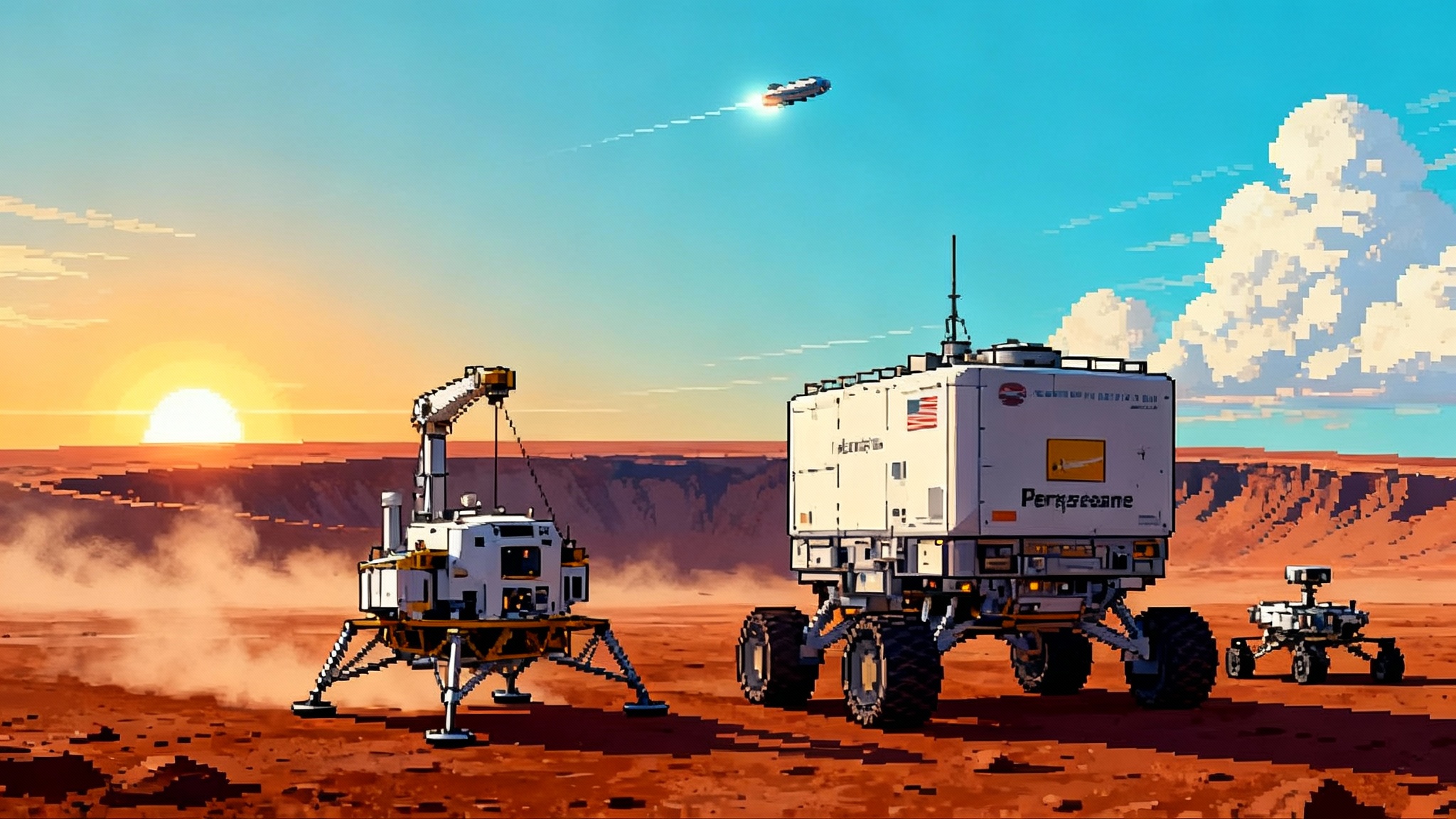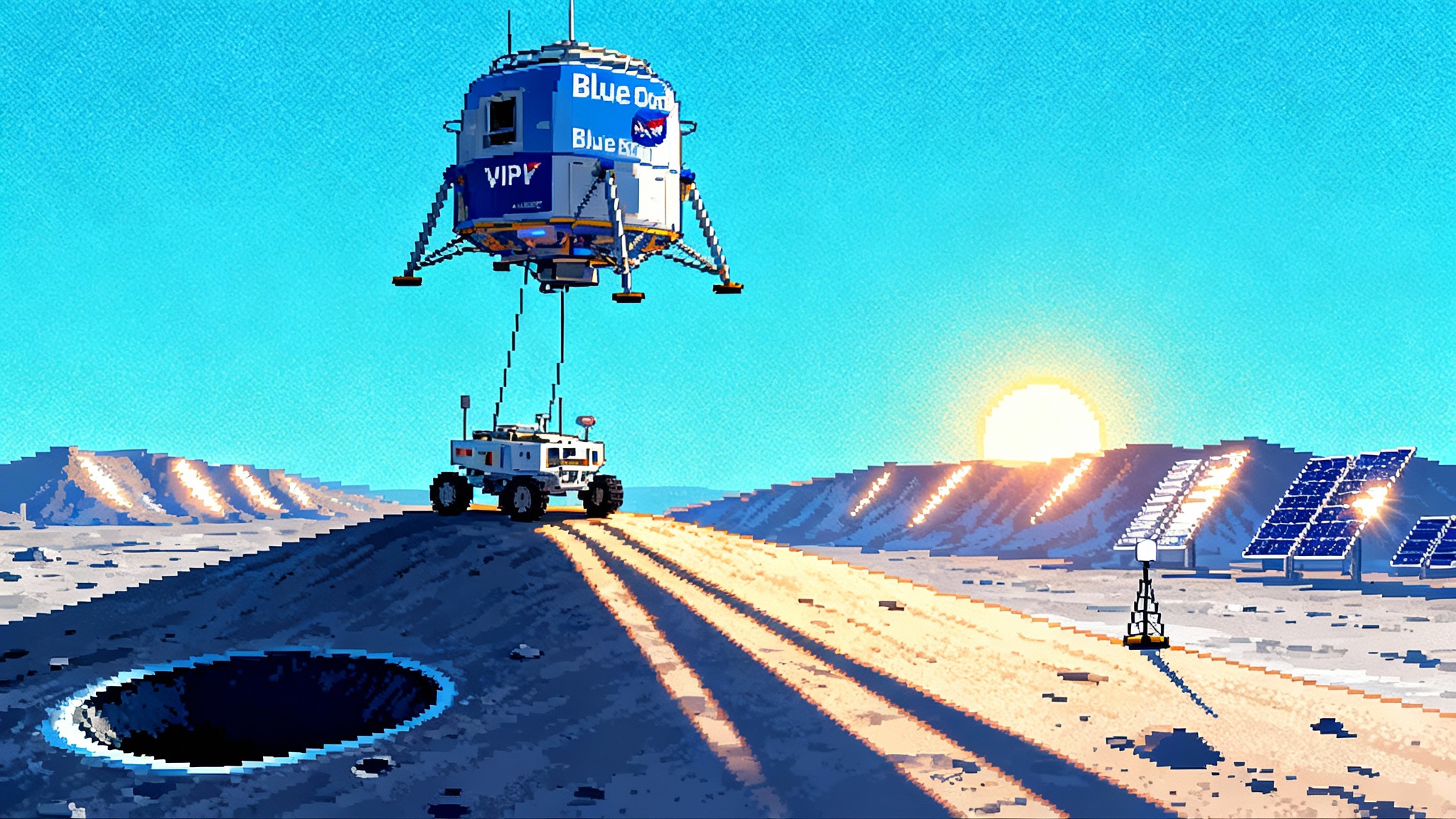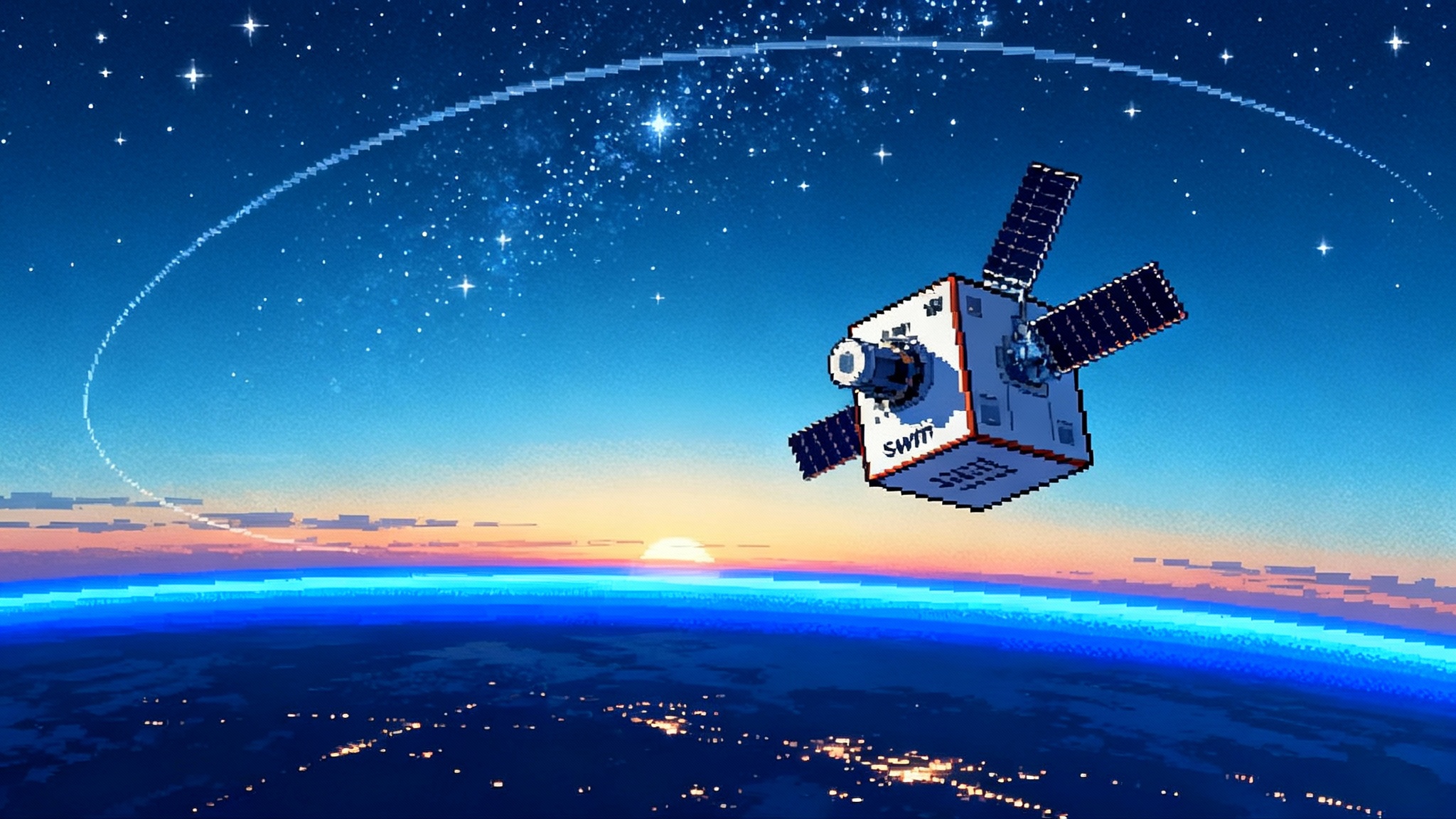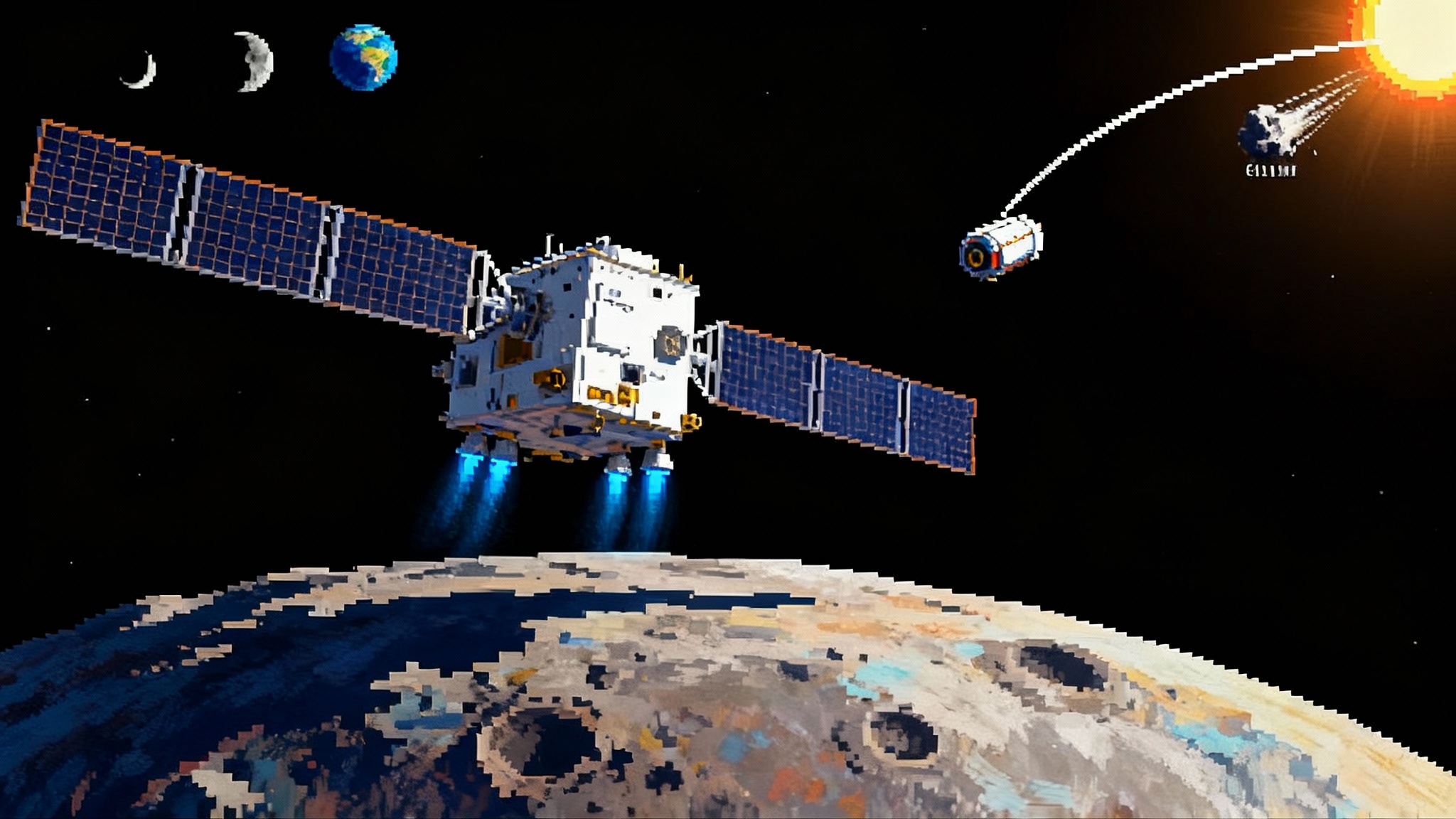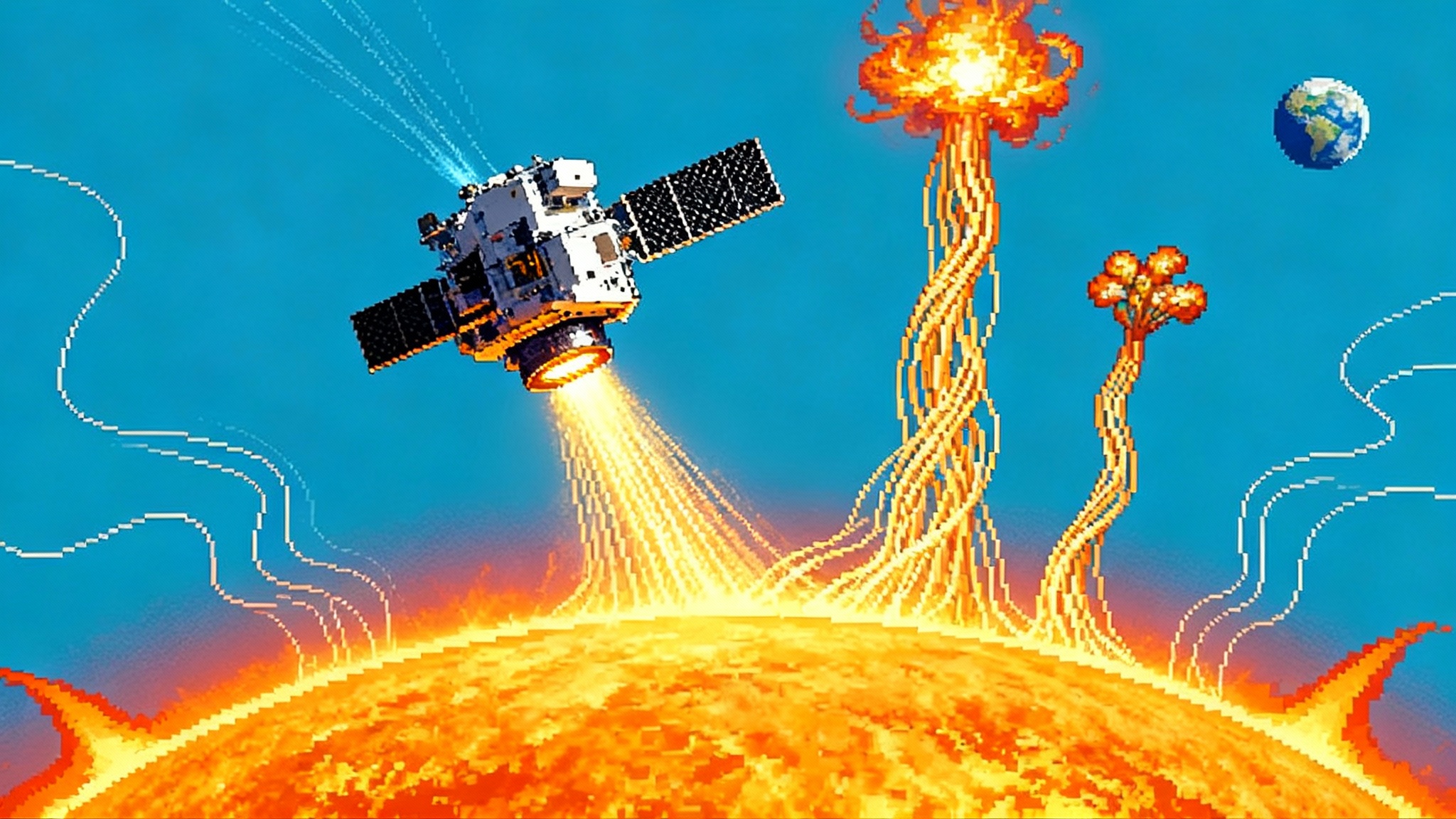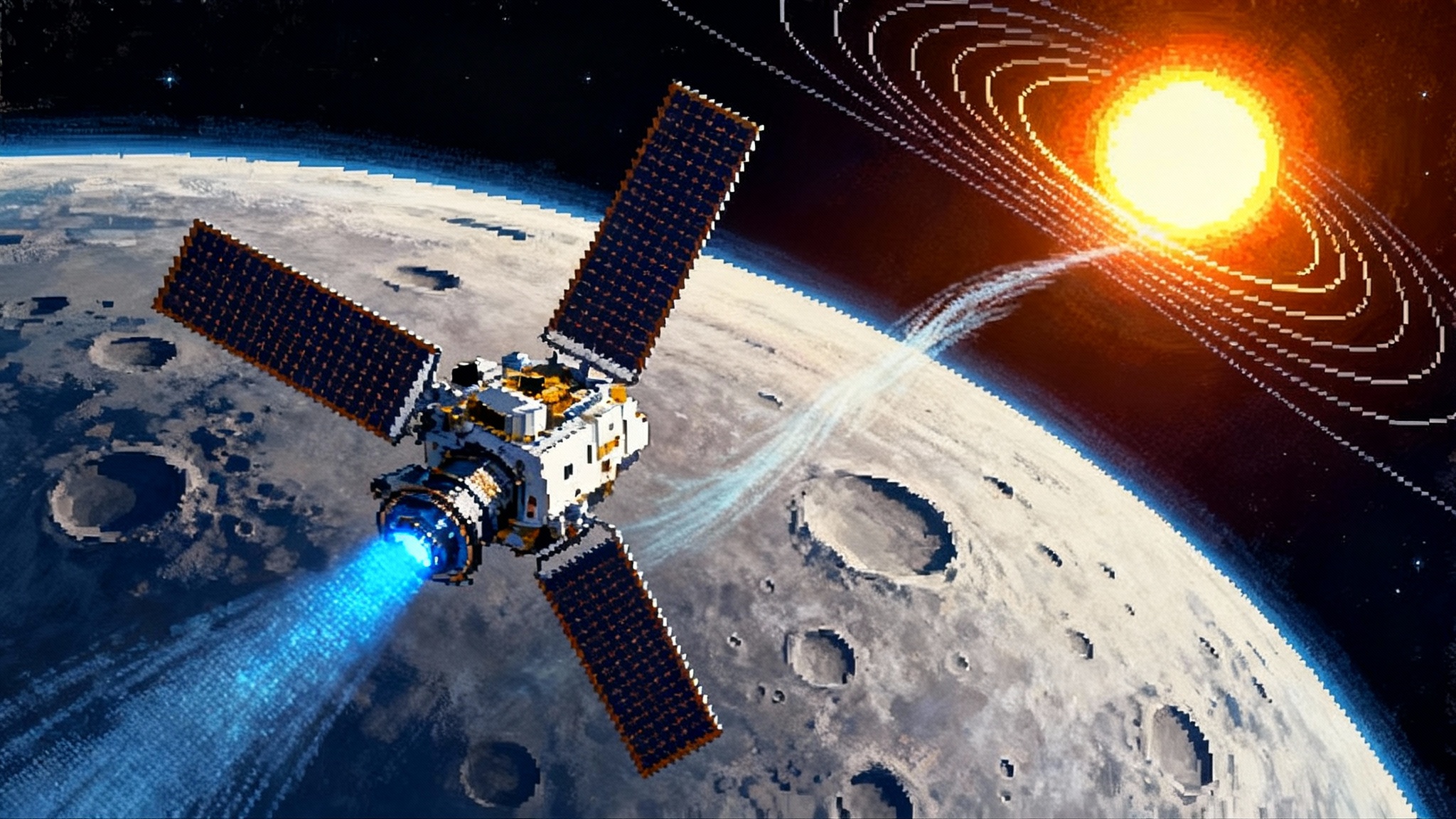Makemake’s methane signals a new Kuiper Belt playbook
A faint methane glow above dwarf planet Makemake changes how we explore the Kuiper Belt. Here is a practical two-track plan, from a real-time Kuiper Belt Watch to a lean flyby that rides a Jupiter assist.

The spark: methane above a frozen world
In September 2025, a James Webb Space Telescope team reported faint methane gas glowing above the surface of the dwarf planet Makemake. The signal is not a thick atmosphere. It is a delicate glow produced when sunlight excites methane molecules and they re-emit at infrared wavelengths near 3.3 microns. This is the second time gas has been confirmed around a trans-Neptunian object after Pluto, and the first time for Makemake. The discovery comes from careful spectral modeling of Webb’s Near Infrared Spectrograph data and it points to a world that is still exchanging material between surface and space. The analysis and the numbers live in the primary paper: JWST methane on Makemake.
Why is this so consequential? Because gas above Makemake means active processes in a realm we have labeled quiet. Methane can reach the gas phase in two ways. It can sublime from sunlit patches of surface ice, building an ultra-thin, bound atmosphere that waxes and wanes with seasons. Or it can be blasted into space in short outbursts from local vents, similar in spirit to what Cassini saw at Enceladus, as discussed in our Enceladus life hunt mission, but with methane instead of water. The Webb team modeled both cases. The bound-atmosphere scenario suggests temperatures near forty kelvin and pressures around ten picobars, a billionth of Earth’s sea-level pressure. The outburst scenario yields production rates compatible with a narrow, vigorous plume.
The simple lesson is surprisingly bold. The Kuiper Belt is not a museum shelf. It is a landscape with weather, geology, and chemistry that still change today.
What fluorescence really tells us
If you have ever seen a fluorescent highlighter under a blacklight, you know the effect. Ultraviolet light energizes a dye, then the dye re-emits at a color your eyes can see. Methane fluorescence works the same way, but the glow shows up at infrared wavelengths. That is where Webb is sensitive and where methane has strong spectral lines. Detecting fluorescence above a frozen body tells us there are free molecules in the space just above the surface. It also tells us about temperature and the shapes of the molecules’ motions, because the pattern of bright lines acts like a fingerprint.
In Makemake’s case, the fingerprint is so faint that it forces us to ask a practical question. Are we looking at a thin, steady veil or a series of transient puffs? A steady veil would follow sunlight and season. Transient puffs would spike and relax in a matter of hours to days. Webb’s first look cannot distinguish the two with certainty. That is not a failure. It is a roadmap for what to do next.
The two-track response we can start right now
The right response splits in two. Track one builds a persistent Kuiper Belt Watch that exploits the instruments we already have. Track two accelerates a small, focused flyby mission that can sniff the gas up close and map the surface processes that feed it. This two-lane approach echoes the two-track Mars sample return strategy we have covered. The combination is low cost, high payoff, and it begins to update our outer solar system playbook immediately.
Track one: a Kuiper Belt Watch
This is an observing campaign, not a single study. It coordinates three lines of evidence to catch a veil or a puff in the act.
- James Webb as the trigger and referee
Webb is the only facility that can repeatedly see the methane fluorescence at high confidence today. The practical plan is straightforward. Reserve a small block of Near Infrared Spectrograph time two to three times per year for Makemake and a handful of other methane-rich targets like Eris and Quaoar. Use a mix of moderate and high spectral resolution to measure the strength and shape of the methane lines. If a plume turns on, the lines brighten and broaden. If a bound atmosphere shifts with season, the lines wax and wane in sync with geometry and solar heating. Webb is the barometer.
Keep the observations short and frequent rather than long and rare. Think of this like taking the pulse, not a full-body scan. The goal is cadence. If the methane signature doubles or fades by half between visits, we will know within months, not years.
- Stellar occultations as the pressure gauge
A stellar occultation happens when a distant star slips behind a foreground body. If there is even a whisper of atmosphere, the starlight dims and reddens in a way that reveals pressure, temperature, and how the gas is layered. This method is exquisitely sensitive. For Pluto, it traced atmospheric pressure down to microbar levels. For Makemake, even a non-detection is valuable because it sets hard limits that theory must satisfy.
We already have the ingredients for a global occultation network. The International Occultation Timing Association brings skilled amateurs with fast cameras. The RECON project connects communities across the American West. The Vera Rubin Observatory’s sky survey will sharpen predictions by pinning down the positions of both stars and Kuiper Belt objects. What is missing is a standing plan. The fix is simple. Publish a rolling six to twelve month list of likely Makemake occultations and pre-plan deployments of portable telescopes in the path. A single clean central crossing can rule in or out a ten picobar atmosphere. If Webb signals a brightening, the network can surge to catch the next shadow.
- ALMA as the chemistry and dust monitor
Methane is tough to see at millimeter wavelengths, but other volatiles and any dust entrained in plumes are not. The Atacama Large Millimeter Array can search for carbon monoxide and hydrogen cyanide lines, which would flag deep chemistry or warmer subsurface pockets. It can also monitor thermal emission for dust if outbursts loft fine particles. Schedule short, rapid-response observations keyed to Webb’s alerts. If Webb reports a spike, ALMA looks within days. Even upper limits matter, because they pin down how efficient Makemake is at releasing gases and grains.
The outcome of a Kuiper Belt Watch is a time series. With a year or two of cadence we can separate steady from spiky behavior, and we can tell whether Makemake breathes with the Sun or coughs with localized vents. Best of all, this framework generalizes. The same playbook applied to Eris, Quaoar, and Haumea would quickly reveal whether Makemake is an oddball or a trendsetter.
Track two: a lean flyby that samples the gas directly
Remote sensing can only go so far. To know the source of the methane we must fly through it. The fastest path is a small, solar electric assisted spacecraft that uses a Jupiter gravity assist, then coasts outward to a mid 2040s Makemake flyby. The mission does not need to be a flagship. It needs to be smart about propulsion, power, and instruments.
How to go fast without going big
• Propulsion. Use a solar electric stage near the Sun to add several kilometers per second before heading to Jupiter. Think NEXT-C xenon thrusters fed by deployable arrays in the ten to twenty kilowatt class at one astronomical unit. China’s Tianwen-2 small-body mission is flying a related architecture that shows the maturity of this approach. After the Jupiter swingby, the stage is idle or jettisoned. The science craft rides the boost outward.
• Power. Past Jupiter, solar arrays fade. The science craft should carry a radioisotope power source for instruments and heaters. One multi mission radioisotope thermoelectric generator keeps the payload alive and simple during the long cruise.
• Trajectory. A practical target is a 2032 or 2033 Jupiter gravity assist. That implies a launch in the late 2020s or early 2030s depending on the exact stack and thrusting strategy. Cruise from Jupiter to Makemake takes on the order of a decade, which yields a mid 2040s encounter. That is fast for 45 astronomical units. It is also far sooner than a new flagship that would not launch until the 2040s.
• Launch. A medium to heavy commercial rocket is sufficient when paired with the solar electric stage. Falcon Heavy or Vulcan Centaur are credible candidates. If schedules and cost permit, Starship could loft the complete stack with margin. The point is flexibility. The mission should be launcher agnostic so it can ride what is ready.
The payload that answers the methane question
A flyby cannot carry everything, so every instrument must earn its keep by answering a specific question about source, chemistry, or exchange.
• Neutral gas mass spectrometer. This is the centerpiece. It samples methane, its fragments, and trace gases like carbon monoxide and nitrogen during the brief close pass. With modern time of flight designs, it can measure isotopes too. The key questions are simple. How much methane, what else is in the mix, and are the isotopic ratios consistent with primordial ice or interior processing.
• Infrared mapping spectrometer centered at 3 microns. This maps methane ice and the methane fluorescence at high spatial resolution, tying gas to specific terrains. Think of it as the bridge between Webb’s global spectrum and the spacecraft’s local sniff.
• Ultraviolet spectrograph. It profiles any bound atmosphere by looking at starlight and sunlight that skim the limb of Makemake. Occultations of bright stars during the flyby can reveal temperature and density profiles down to extremely low pressures.
• Visible and near infrared cameras. One narrow angle camera for geology, one wide angle camera for context. Vents, pits, and fresh frost will betray where gas last erupted or sublimed. The morphology matters because terrain controls heat and gas pathways.
• Thermal imager. A mid infrared mapper finds warm patches. Even a slight excess in a dark trough can be the telltale of a vent.
• Dust counter. If outbursts loft particles, a simple impact detector will catch them. Grain sizes and speeds tell us about venting energy.
The operations concept is New Horizons simple. Approach imaging begins weeks out, the spacecraft executes a single, precise targeting maneuver, then it knifes through closest approach while instruments auto-sequence through their highest cadence observations. The mass spectrometer times its inlets to the densest part of the suspected plume or atmosphere. The ultraviolet instrument stares at a bright star to exploit a grazing occultation. Minutes later, the craft turns for a high phase angle look back to search for forward-scattered haze.
Cost and schedule without mission bloat
A small outer solar system flyby will not fit in a strict Discovery cost cap, but it does not need to climb to a flagship either. A realistic target is a New Frontiers scale budget with tight scope control, heritage instruments, and a staged propulsion design that uses a commercial solar electric tug as the booster. The procurement can be competed to drive cost, with teams led by institutions that have recently delivered deep space craft. Southwest Research Institute and Johns Hopkins Applied Physics Laboratory have built this class of mission. Airbus and Thales Alenia Space have deep solar electric experience. Jet Propulsion Laboratory brings heritage in mass spectrometry and infrared mapping. The point is not to pick a winner now. It is to prime a competition in 2026, downselect by 2027, hold a preliminary design review by 2028, and be on a pad in the early 2030s to hit a 2032 or 2033 Jupiter assist.
Why a quick pivot is worth it
This two-track plan changes our posture in three concrete ways.
• We stop treating the Kuiper Belt as static. Regular Webb, occultation, and ALMA checks give us the first long baseline on activity in this region. That helps models of volatile transport everywhere from comets to dwarf planets.
• We transform one discovery into a testable hypothesis. If the methane above Makemake comes and goes, we will see it. If it persists at a steady level, we will prove that too and tighten the pressure limits. Either way, models must hit the target instead of hand-waving.
• We buy down mission risk early. Time series data will show when Makemake is most active and how that aligns with sunlight and geometry. The flyby can then be timed for a season and subsolar latitude that maximize plume or atmosphere encounter probability. That is the difference between sniffing empty space and sampling the goods.
The wider ripple: dwarf planets as climate laboratories
Makemake sits near 45 astronomical units where sunlight is weak. If even there methane can move from ice to gas, then volatile cycles may be common across dwarf planets. That has two big implications.
First, it reframes the history of these bodies. Surfaces that refresh with frost and haze can mask or mimic geologic ages. What looks ancient may be resurfaced every season by thin frosts, while truly old terrains may hide in darker, colder traps that resist change.
Second, it connects directly to exoplanets. Webb has been finding methane and hydrocarbon chemistry in large exoplanet atmospheres. The same physics that makes methane fluoresce above Makemake also shapes methane signatures far away. A firm handle on methane behavior in our backyard improves the models astronomers use when they claim a detection in a remote spectrum.
What to do next week, next year, and next decade
Next week. Reserve a small block of Webb time for Makemake monitoring over the next 18 months. Put two teams on the data, one assuming a bound atmosphere, one assuming plumes, and publish their predictions before the photons arrive. In parallel, assemble an occultation task force that can mobilize within a month and define the telescope kits to be pre-positioned along likely paths.
Next year. Stand up a Kuiper Belt Watch coordination office that does three specific things. It posts monthly forecasts of occultations with uncertainties and mobilization plans. It maintains a rapid alert when Webb sees a methane spike so ALMA can follow within days. It releases all reduced data on a shared platform so that independent groups can test rival models in public.
Next decade. Select and build the lean flyby. Keep the payload tight and the interface simple. Require a 2032 or 2033 Jupiter gravity assist target, a radioisotope power system, and a clear plan for mass spectrometer contamination control. State clearly what would cancel the mission. For example, if three consecutive years of monitoring show no methane signal at all, pause before committing to cruise. That kind of pre-declared logic keeps budgets honest and science first.
The fine print, faced plainly
There are uncertainties. The methane signal could be a rare event and stay quiet for years. A picobar atmosphere may be below even occultation detection in many geometries. ALMA may never see a corroborating gas. None of these are arguments to wait. They are reasons to design the plan so that even non-detections are valuable. Every quiet epoch tightens the limits and sharpens the models. Every null result for carbon monoxide or dust narrows which subsurface chemistries are plausible.
The mission timeline also deserves clarity. A Jupiter assist in the early 2030s implies arrival in the mid 2040s. That is not instant. It is still the quickest credible way to get a mass spectrometer to Makemake. Compared to a brand new outer planets flagship that would not launch until the 2040s and arrive in the 2050s, a lean flyby is the faster, cheaper path to decisive measurements.
The headline to remember
Webb’s detection turns Makemake from a point of light into a living world with moving molecules. That one fact justifies a shift from one-off snapshots to watchfulness, and from distant spectra to a targeted flyby. Start the Kuiper Belt Watch this observing season. Put a lean Makemake mission on the 2032 Jupiter train. The worst case is that we learn the Kuiper Belt is quieter than we hoped, and we learn it fast. The best case is that we catch a dwarf planet exhaling in real time and bring a sampler through the breath.
For the formal numbers on temperatures, pressures, and the two scenarios in play, see the institute release from the team that led the work: SwRI confirms methane. The science is strong, the next steps are practical, and the upside is wide. It is time to move.
